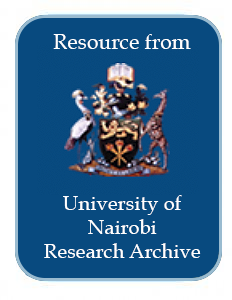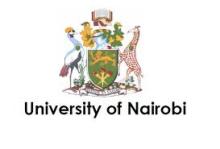Resource information
The distribution of Trichoderma species in soils of Embu region in relation to land use practices was investigated. The study area was chosen because of its significant land use intensification. Soil washing and dilution plate techniques were used to recover Trichoderma spp from the soil samples. The fungal isolates were identified and assigned to eight species. Greater populations as well as a wider range of species were obtained in soils collected from the natural forests while coffee farms were the poorest ones. Land use affected the distribution of Trichoderma. Napier farms had the highest abundance of this fungus. The species which showed the highest incidence in all cases was T. harzianum. Plant type was a major determinant of the occurrence of this fungus. Trichoderma favored plants with shallow and widespread rooting systems, to the deeply
rooted perennial coffee and tea trees. The age of the plants also was a driving factor. Both
inorganic and organic fertilizers are used in the region. There was a negative correlation between amount of chemical fertilizers and abundance of the fungus. Organic fertilizers were used exclusively in napier farms that had the highest fungal abundance. Soil pH and amount of phosphorus were limiting and influenced the occurrence and abundance of this fungus. However carbon and nitrogen were not limiting though they were high in the forests and napier farms where the fungus was also abundant. Trichoderma showed tolerance to soil acidity since it was abundant in the most acidic soils under napier. Land intensification affected Trichoderma distribution negatively.


